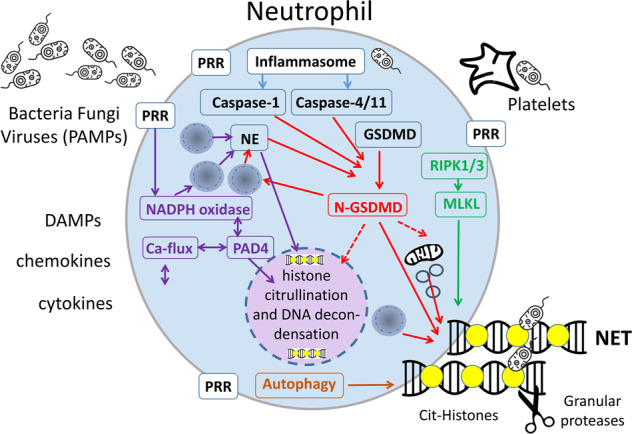Fig. 2. Mechanisms of NET formation.

Pathways that regulate NET formation (see body text for references). Pattern recognizing receptors (PRR) initiate NADPH oxidase activation and a spike of cytosolic calcium activating neutrophil peptidylarginine deiminase 4 (PADI4) causing histone citrullination (yellow circle) and DNA decondensation. Chromatin and/or mitochondrial DNA is expelled and form NETs. Several necrotic cell death pathways may contribute to NETosis. Necroptosis involves RIPK1/RIPK3-mediated activation of MLKL and plasma membrane permeabilization contributing to the release of NETs. Pyroptosis involves canonical or non-canonical inflammasome activation by the caspases-1 or 4, respectively. Caspase-1 and 4 as well as NE cleave GSDMD and generates the N-GSDMD fragment with a pore-forming activity that enables the release of NETs. In addition, autophagic processes contribute to the release of NETs. Original illustration from the authors.
